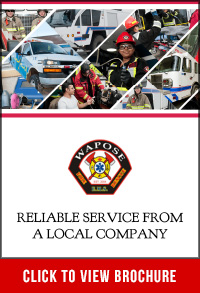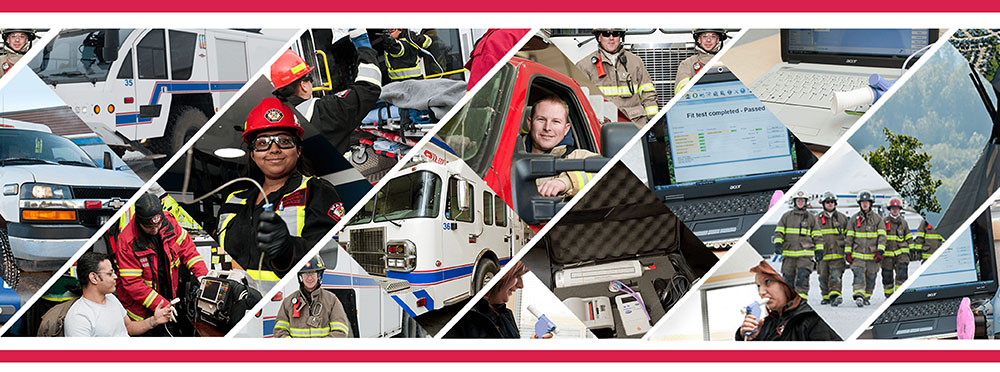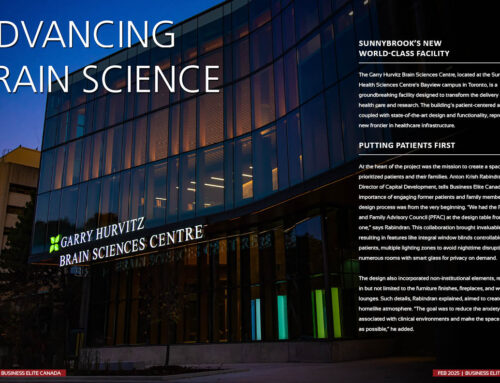Reliable Service From a Local Company
By Rajitha Sivakumaran
 According to a report released by the Alberta Health Services (AHS), of the 2,300 patients surveyed, most were immensely satisfied with their EMS experience in the 2015-2016 period. The time that it took for the emergency communications officer to dispatch an ambulance has gradually improved since 2013. The AHS target is 90 seconds at the 90th percentile, but the reality is only about 15 seconds longer.
According to a report released by the Alberta Health Services (AHS), of the 2,300 patients surveyed, most were immensely satisfied with their EMS experience in the 2015-2016 period. The time that it took for the emergency communications officer to dispatch an ambulance has gradually improved since 2013. The AHS target is 90 seconds at the 90th percentile, but the reality is only about 15 seconds longer.
The time that it took for an ambulance to arrive for life-threatening situations in urban centres didn’t take more than 10 to 12 minutes for 90 per cent of cases, with a median response time of about seven minutes. Small communities with a population of less than 3,000 experienced slightly increased wait times. It usually took less than 40 minutes to reach rural areas whereas remote zones normally did not wait longer than an hour. Although response times for rural and remote communities may seem long, EMS services met the target set by the AHS in both cases.
Fort McMurray, the largest unincorporated “city” in Alberta, is a rapidly growing industrial centre with a population of over 60,000 people. Yet about 12 years ago, Ryan Pruden, a Fort McMurray native, Metis and EMT/Rescue Tech by trade, felt obligated to start his own EMS company. “I just noticed that there weren’t any medical providers in our area. All of them were coming up from Calgary and Edmonton or out of province,” Pruden said.
More than a decade later, his part-time venture, Wapose Emergency Services, has grown into one of the nation’s largest emergency services providers under Aboriginal ownership. It has an annual revenue of over $6 million, which is 28 times higher than that of the average Canadian company in this sector. Services include not just ambulance but everything from medical staffing to setting up on-site clinics. Another speciality of Wapose is occupational therapy, which involves everything from drug testing to helping people get back to work after an injury. It also has a firefighting division consisting of 50 firefighters and fire trucks to respond to emergencies around the community.
“We have the largest amount of equipment and manpower ready in Fort McMurray. We’ve had a lot of success, a lot of happy clients, and all of our clients are returning clients,” Pruden said, adding that manpower is the predominant factor behind the company’s success. In the first two years of starting the company, Pruden led a solo show, balancing a full-time job with his days off being devoted to Wapose. Eventually, the number grew to about five and then doubled. Right now, Wapose employs 64 full-time people.
Challenges of the past, problems of the present
When Pruden first emerged as an entrepreneur, the biggest challenge was funding — an issue because he received backing from neither the banks nor the Aboriginal Business Canada (ABC) since he held on to his full-time job while managing Wapose. “So I funded it myself,” Pruden said, and he has been reaping the benefits ever since.
The current challenges consist of all the difficulties that accompany any growing business. Going from a small to big company and proving the company’s ever-expanding capabilities to the client, that is the obstacle Pruden is presently facing. With its revenue in the millions, Wapose already sits amongst the top 10 per cent of Canadian companies in this sector, but the last couple of years have been taxing due to the slow economy. Pruden, however, expects things to pick back up in the coming year, bringing some more growth for his company.
The logistics of managing a company are only one source of challenges in the EMS business. The job exposes first responders and other medical professionals to stressful situations on a daily basis. Working for industrial clients, Wapose staff at least aren’t exposed to particularly sensitive patients like children, but dealing with death and grieving families are an unavoidable part of the job.
Pruden has been in the industry for 25 years now, and time and constant exposure have done their part to ease the stresses of being a paramedic. “It’s almost like another day at the job. You just go there and you do what you are paid to do,” Pruden said, although he admits that he felt an anxious adrenaline rush every time a call came in during the first couple of years on the job. Exercise has become his medicine though; going to the gym and playing hockey helps to take the edge off. Watching his children play hockey works just as effectively, he says.
The rewarding nature of the job helps as well. Wapose worked with various clients during the aftermath of the Fort McMurray wildfire, bringing in medical staff to Fort McMurray and Edmonton in order to assess whether people were fit to return to work, provided medical coverage at various camps and had paid and volunteer firefighters throughout Wood Buffalo.
Being an EMS provider, Pruden and his staff are ingrained with an innate concern for people, which is why they often donate time, money or manpower to various communities throughout the Fort McMurray area. Every month, Wapose sends out staff to support everything from the Metis fest, treaty days, sporting events and golf tournaments to the rodeo, MFC fights, Keyano College foundation and the hospital foundation
“We are there for Fort McMurray and we always will be. We are getting bigger and stronger and we will be there for everybody’s needs,” Pruden said.
www.wapose.ca






